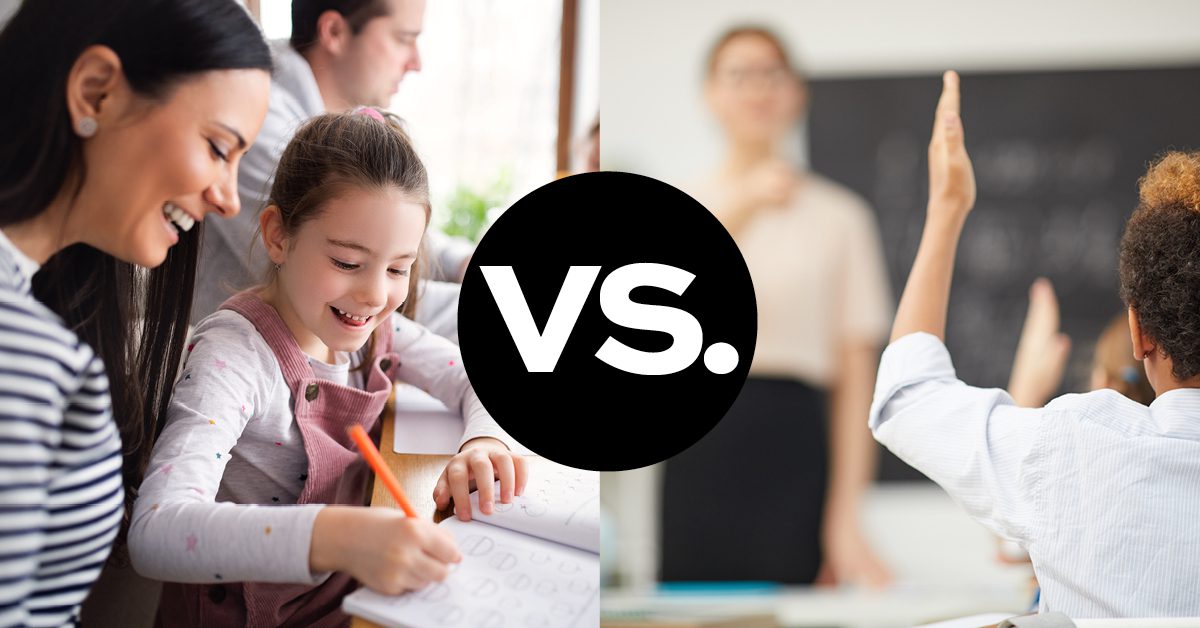When considering home schooling in Indiana, parents often weigh the flexibility, socialization opportunities, curriculum control, and cost implications. Each educational approach has unique benefits and challenges that impact students and families differently. Let’s dive into the specifics of these factors to better understand the pros and cons of homeschooling and public schooling in Indiana.
Table of Contents
Learning at Your Own Pace: Flexibility in Homeschooling and Public Schooling
Homeschooling: One of the most significant advantages of homeschooling is the flexibility it offers. Parents can tailor the educational experience to fit their child’s individual learning style, pace, and interests. This customization can foster a more engaging and effective learning environment. For instance, if a child excels in math but struggles with reading, the curriculum can be adjusted to provide additional reading support while allowing the child to advance in math at a faster pace. Furthermore, homeschooling allows for a more relaxed schedule, which can be particularly beneficial for families with unique needs or those who travel frequently.
Public Schooling: Public schools in Indiana offer a structured environment with a set schedule and curriculum designed to meet state educational standards. This structure can be advantageous for students who thrive on routine and consistency. Public schools also provide access to a wide range of resources and extracurricular activities, such as sports teams, music programs, and advanced placement courses, which can enhance the overall educational experience. However, the standardized approach may not cater to every student’s individual needs, potentially leading to gaps in learning or disengagement.
Building Social Skills: Homeschooling and Public School Socialization
Homeschooling: One common concern about homeschooling is the potential lack of socialization opportunities. However, many homeschooling families actively seek out ways to ensure their children engage with peers and the community. Homeschool co-ops, community sports teams, clubs, and volunteer opportunities can provide valuable social interactions. Additionally, homeschooling allows for more diverse socialization experiences, as children often interact with individuals of various ages and backgrounds, rather than being limited to a classroom of same-age peers.
Public Schooling: Public schools inherently offer ample socialization opportunities, as students interact daily with a large group of peers. This environment can help children develop important social skills, such as teamwork, communication, and conflict resolution. Public schools also provide access to a diverse student body, which can expose children to different cultures and perspectives. However, the social dynamics in public schools can sometimes be challenging, with issues such as bullying and peer pressure affecting students’ well-being.
Shaping Learning: Curriculum Control in Homeschooling vs. Public Schools
Homeschooling: One of the primary advantages of homeschooling is the ability to control and customize the curriculum. Parents can choose educational materials that align with their values, beliefs, and educational philosophy. This control allows for a more personalized and relevant learning experience, which can be particularly beneficial for children with specific interests or those who require a non-traditional approach to learning. Additionally, homeschooling parents can incorporate real-world experiences, such as field trips and hands-on projects, to enhance the educational experience.
Public Schooling: In public schools, the curriculum is determined by state and district guidelines, ensuring that all students receive a standardized education. This standardization can be beneficial, as it provides a consistent educational foundation and prepares students for state assessments and college entrance exams. However, the lack of flexibility in the curriculum can be a drawback for students with unique learning needs or interests that fall outside the standard curriculum. Teachers may also face challenges in meeting the diverse needs of their students within the constraints of the prescribed curriculum.
The Price of Learning: Financial Considerations in Homeschooling vs. Public Schools
Homeschooling: The financial implications of homeschooling can vary widely depending on the resources and materials chosen. While homeschooling can be less expensive than private schooling, there are still costs associated with curriculum materials, educational supplies, extracurricular activities, and potential lost income if one parent reduces work hours to facilitate homeschooling. However, many families find that the benefits of a customized education outweigh these costs. Additionally, there are numerous free and low-cost homeschooling resources available online and through community programs.
Public Schooling: Public schooling is funded by taxpayer dollars, making it a cost-effective option for families. Public schools provide access to educational resources, extracurricular activities, and specialized services at no additional cost to families. However, there may be expenses related to school supplies, field trips, and other extracurricular activities. Additionally, some families may choose to invest in supplemental educational resources, such as tutoring or test preparation, to enhance their child’s learning experience.
Weighing the Benefits: Making an Informed Schooling Decision
Choosing between homeschooling and public schooling in Indiana involves careful consideration of various factors, including flexibility, socialization, curriculum control, and cost. Homeschooling offers a highly customizable and flexible learning environment, allowing parents to tailor education to their child’s specific needs and interests. However, it requires a significant investment of time and resources. Public schooling provides a structured and resource-rich environment with built-in socialization opportunities and standardized curriculum but may lack the flexibility to address every child’s unique learning style. Ultimately, the best choice depends on each family’s specific circumstances and educational goals.



